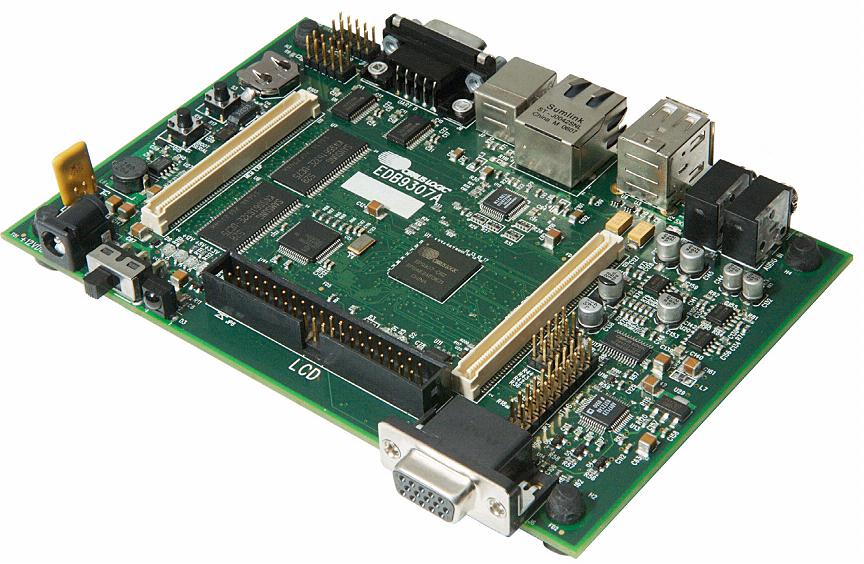Engineering Development Board Cirrus Logic EDB9307A-Z
The EDB9307A is a convenient and easy-to-operate evaluation platform.
Detailed Description
It has been designed to provide the majority of the EP9307 functions on a small 6" × 4" base board. The EP9307 is a low-cost, integrated system-on-chip processor for applications that require a rich user interface. The EP9307 features an advanced 200 MHz ARM920T processor design with a memory management unit (MMU) that supports Linux, Windows CE and many other embedded operating systems. The ARM920T's 32-bit microcontroller architecture, with a five-stage pipeline, delivers impressive performance at very low power.
The 16 KB instruction cache and 16 KB data cache provide zero-cycle latency to the current program and data, or they can be locked to guarantee no-latency access to critical instructions and data. For applications with instruction-memory size restrictions, the ARM920T's compressed Thumb instruction set provides space efficiency and maximum external instruction memory usage.
The ARM920T core is augmented by the MaverickCrunch coprocessor. This coprocessor greatly accelerates the ARM920T's single- and double-precision integer and floating-point processing capabilities, enabling the EP9307 to offer unique speed and performance when encoding digital audio and video formats, processing Ethernet data and performing other math-intensive computing and data-processing functions.
These features include:
- EP9307 Processor Running at 200MHz
- 64MByte SDRAM
- 16MByte NOR Flash Memory
- Two USB 2.0 Full-speed Host Ports
- USB 2.0 High-speed Device Interface
- Audio Out
- Audio In
- Three UARTs
- 10/100 Ethernet Interface
- VGA
- JTAG
- Consumer IR (CIR)
- Expansion Connectors
- LCD Interface with Touch Screen Support
Note: The EDB9307A kit does not include a LCD screen. The LCD interface is pin-compatible with previous Cirrus Logic development boards.
Not all features of the EP9307 are on the base board. Two high-density connectors have been provided to allow for daughter card expansion. The full memory bus is connected to one of the connectors and any peripherals not on the development board are attached to the other connector. In addition, some features such as Ethernet MII interface have been brought out to the peripheral connector as well.
Schematic diagram EDB9307A-Zboard
Other Names:
EDB9307AZ, EDB9307A Z

